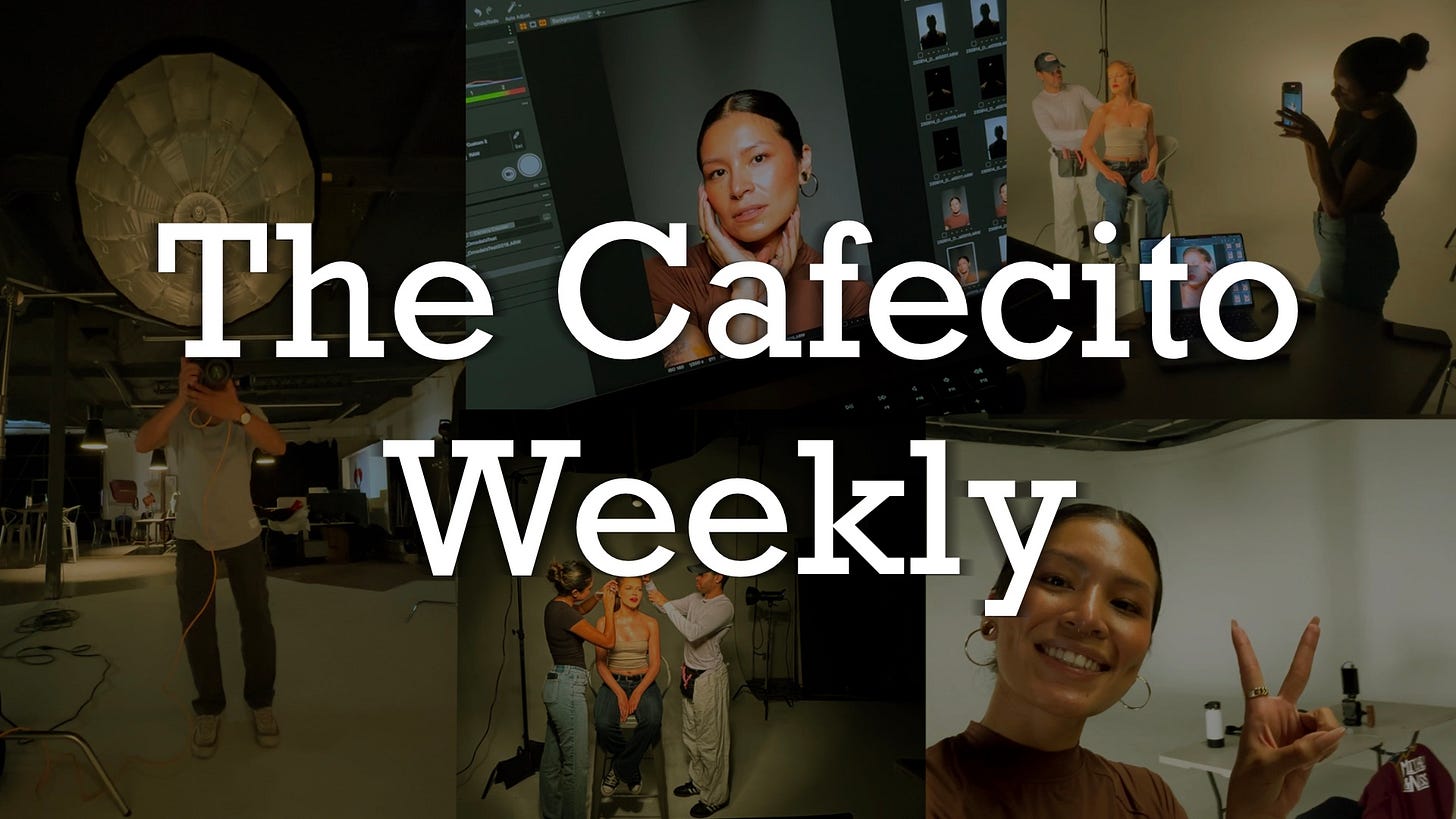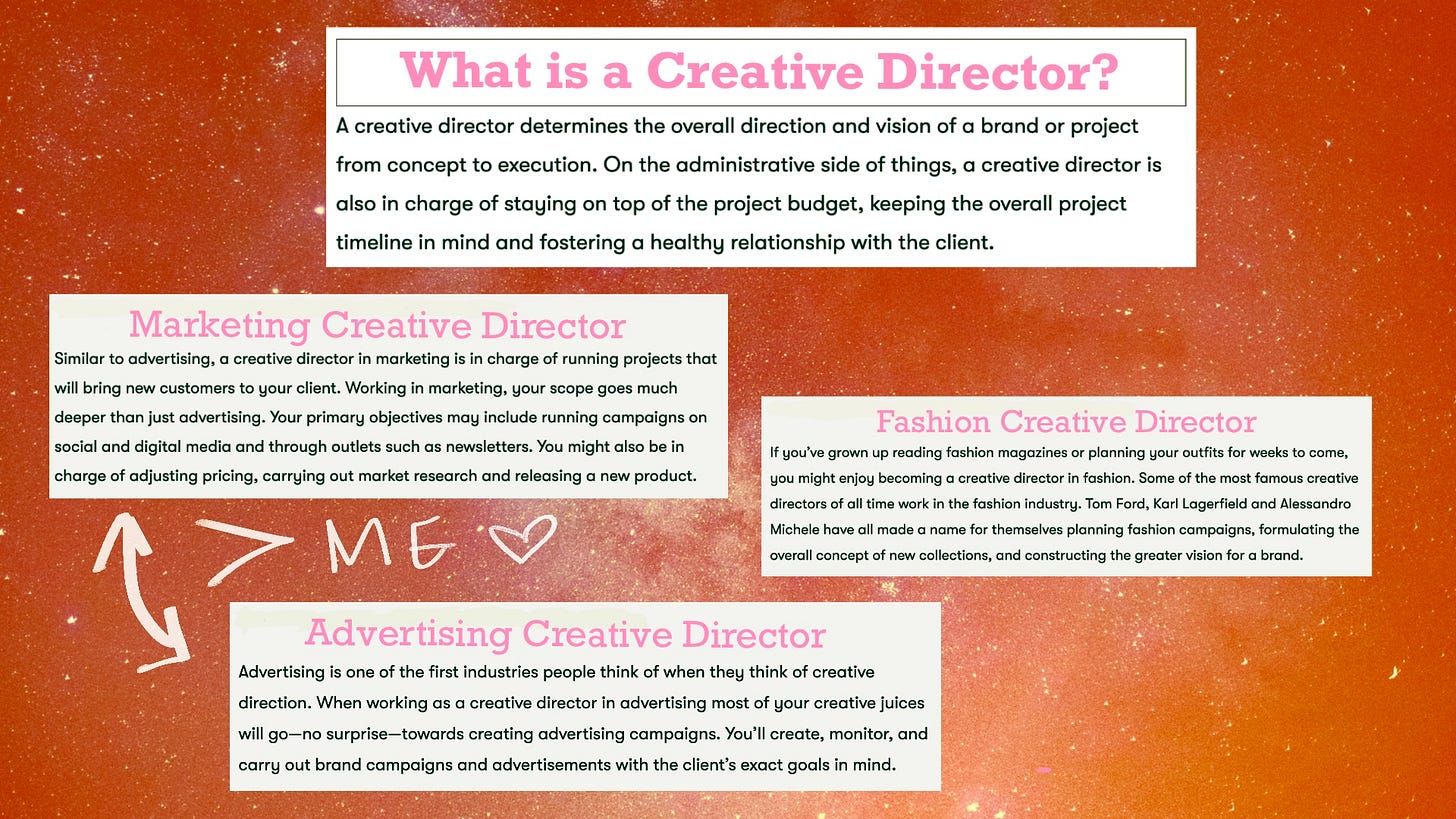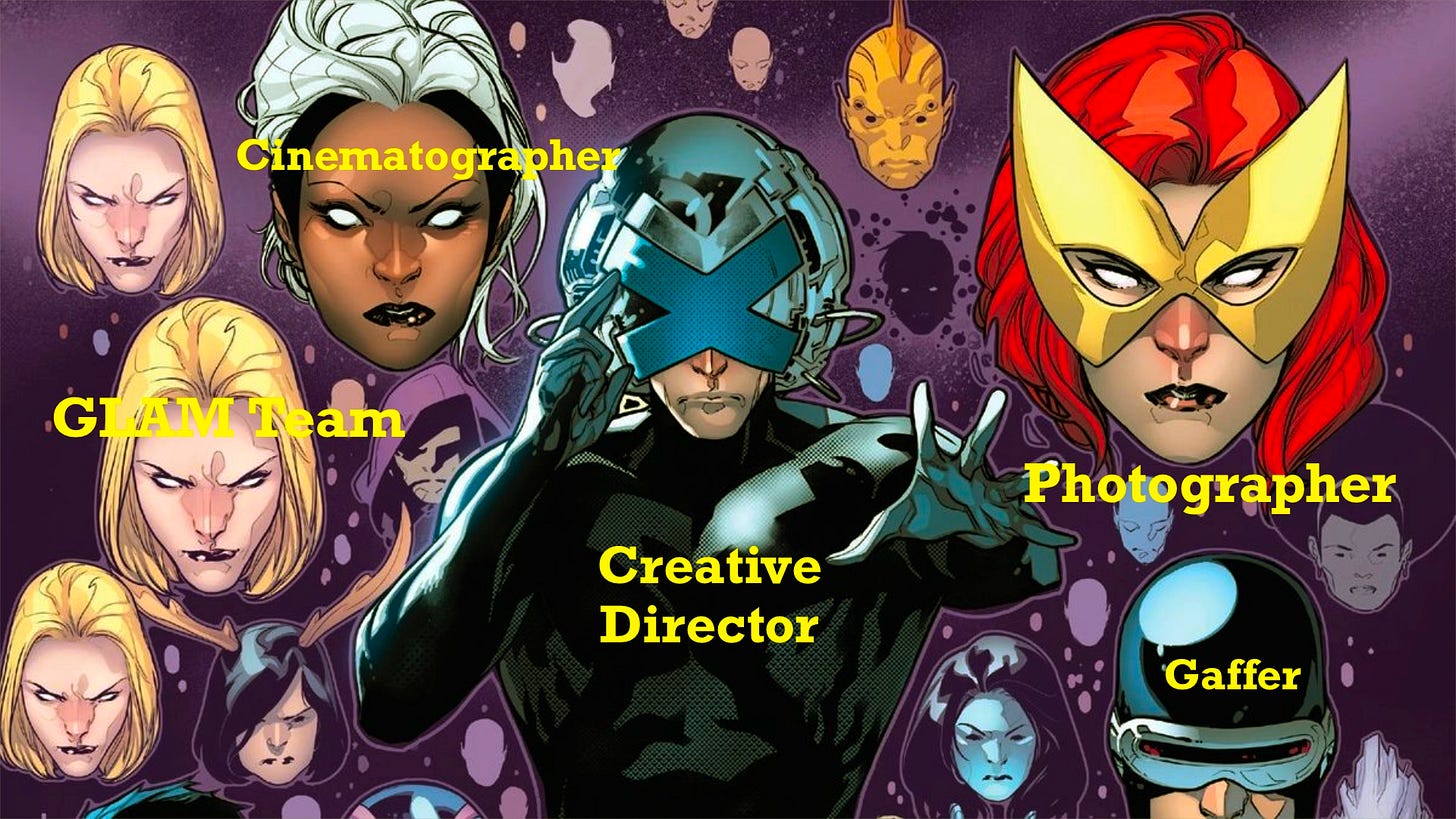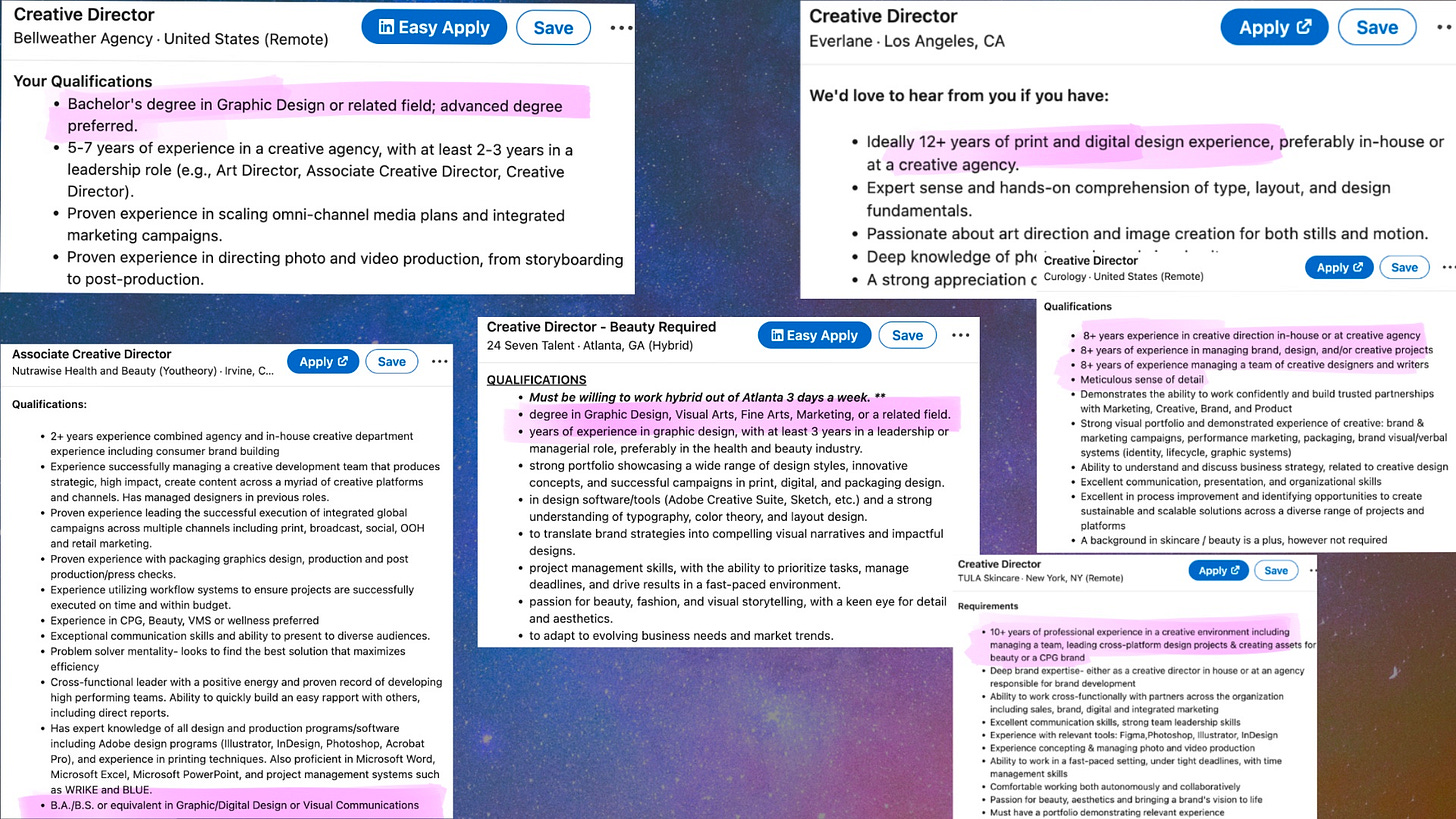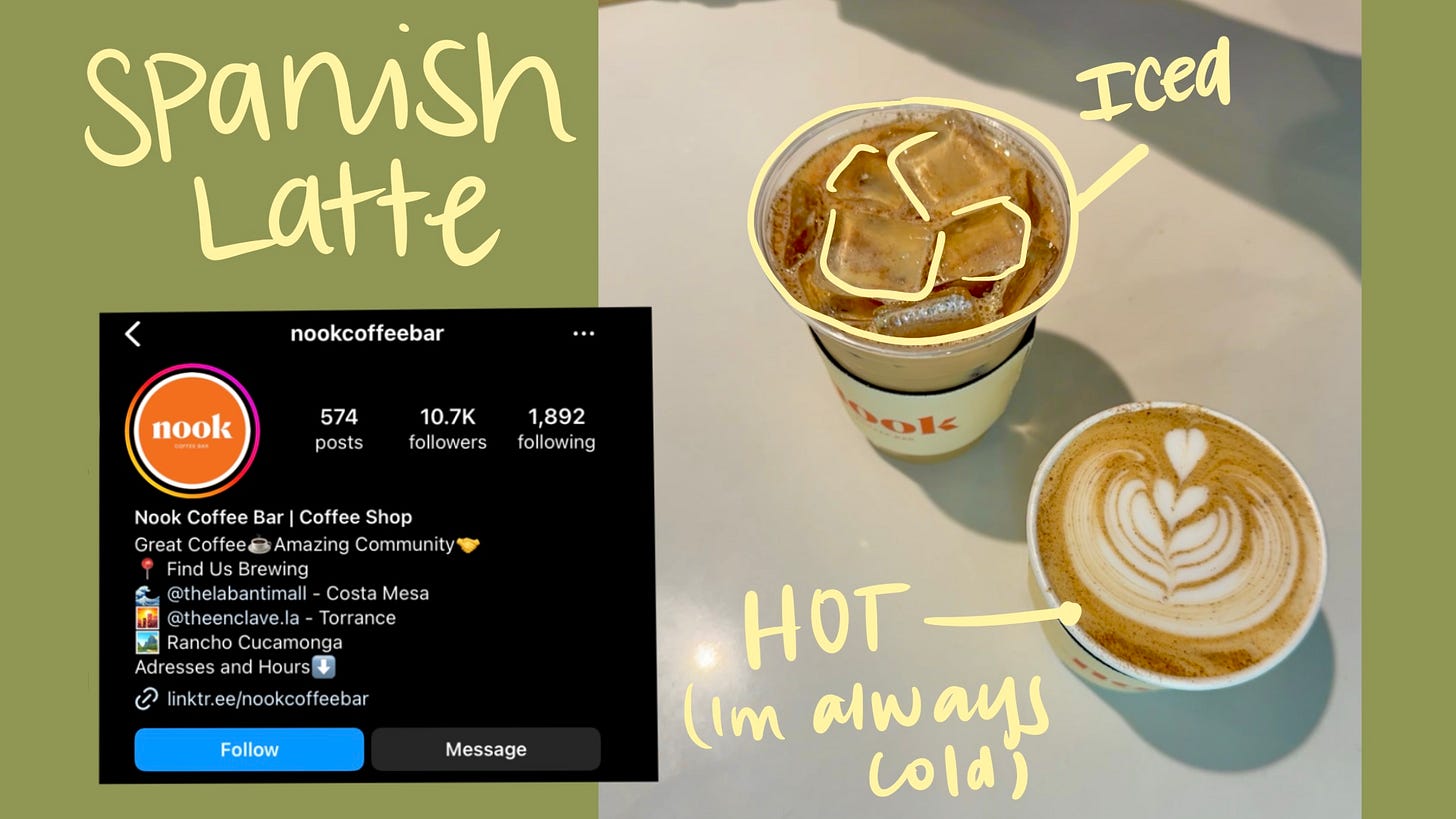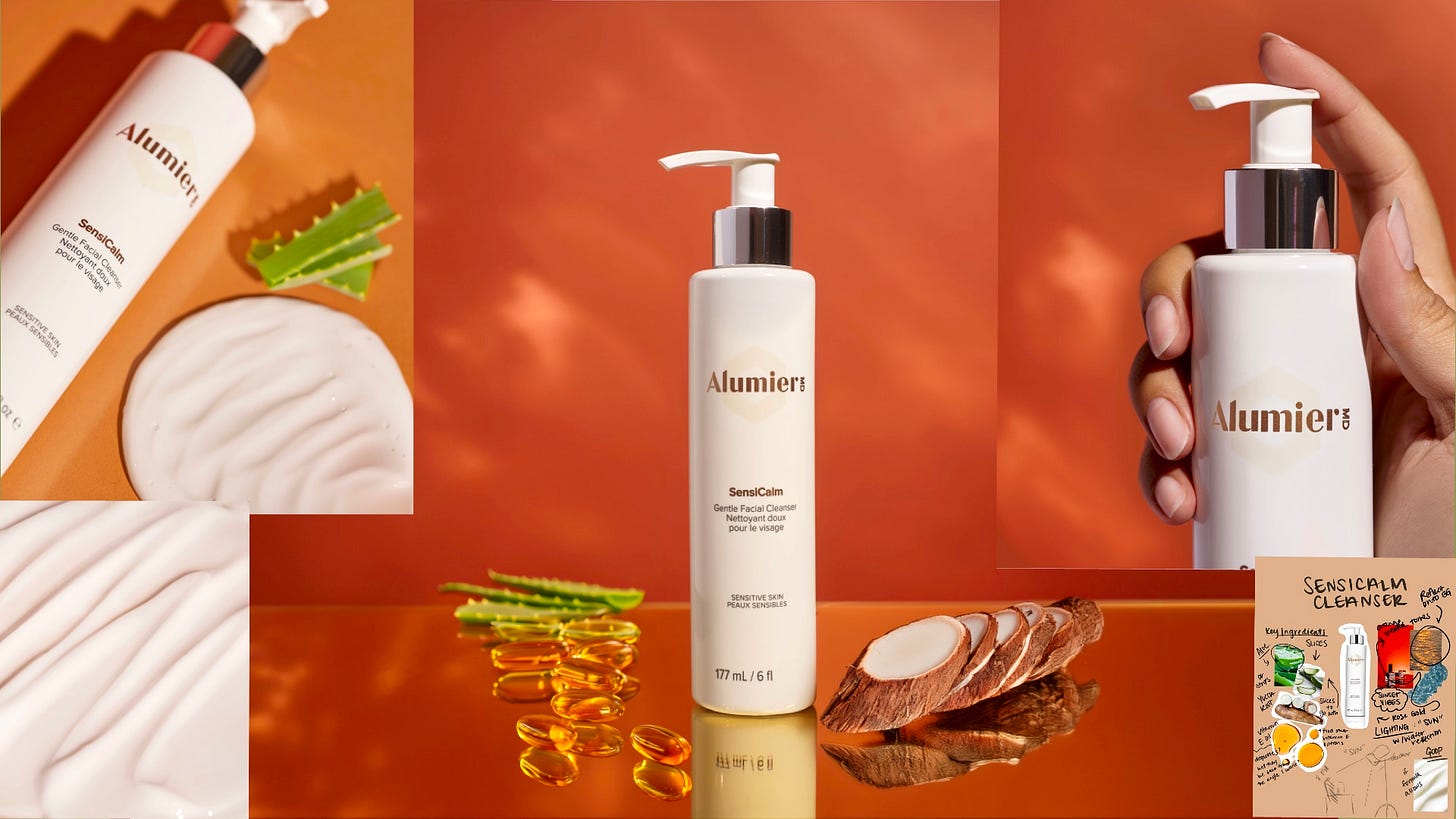04. Being a Creative Director
What tf does that even mean and how did I get here? Sharing my journey as a Creative Director and some tips on how to go about breaking into the industry.
When it comes to questions about my life, my career is always the number one topic so I figured it deserved its own moment. If you’re new here, my name is Julia and I am Creative Director in the beauty/cosmetic/fashion space. I have work ranging from stylized product photography and high end beauty to on model lifestyle video and full body e-comm. But before I get into how I got here, there’s one question we need to answer…
What is a Creative Director?
No matter the industry; it can be food, clothing, makeup, haircare, etc, everyone needs to market their services or product. This is done in a variety of ways that we are all familiar with, such as social media, content marketing, photo and video campaigns, and any other content stream that produces revenue for the brand. The Creative Director is typically the individual who creates and implements the strategy for that content and creative, while providing communication and direction on those creative strategies and content. The Creative Director should be able to implement long-term creative/brand marketing strategies for both the brand/clients, in order to generate more revenue. Their primary responsibility is to create and sustain the brand voice, image and overall creative forward facing identity for the brand and company as a whole, as well as the products they create and the people they serve. This is done in various ways including overseeing all execution on creative marketing such as photoshoots, content deliverables, budget allocating for all creative production, etc.
What Technical Skills does a Creative Director Need?
The scope of work can vary from industry to industry so a well-rounded Creative Director will possess a thorough understanding of various skillsets and mediums; i.e. photography, graphic design, art, production etc. One of the key roles of the Creative Director is to communicate the overall vision to the executing team. From planning and coordinating(including budget allocation and managing a team most times) to directing on set as well as post production, campaign management and monitoring metric performance and ROI. This means that the Creative Director needs to have both a balance of skill/trade as well as a business mindset. While this is a creative position, they also need to have a thorough understanding of how to strategize those creatives moves in a way that benefits the business long term. Here is how I would sum up what you need to be able to do/know if you want to be an effective and well-respected Creative Director in a similar field:
Know how to execute on whatever it is that you are directing:
If you are directing photos or planning a photoshoot, you should already have a certain understanding of what goes into that and how to actually photograph. Someone who has no knowledge of whatever they are directing, cannot effectively direct it. This point may be up for debate for some, but it is the biggest point I would stress, and a hill I will gladly die on. Creative Directors direct various mediums of content so of course it is impossible to be well-versed in them all. But on a day to day basis, given the current needs of the business, most Creative Director roles will oversee and/or manage and/or encompass photoshoots, social media, video creation and some sort of graphic design need such as e-mail marketing. All skills of which the Creative Director should already posses. Think of the Creative Director as the professor Xavier of the team. He has always been a powerful being and had a way deeper understanding of what it meant, which allowed him to tap into the powers that the other X-Men hold. Was he able to shoot out blades from his hands like Wolverine, no; but he was able to tap into Wolverine’s mind and see what he sees and feel what he feels, which helped him understand what it was in the same way that Wolverine did. If you are going to direct a graphic designer, you should have some experience or background in graphic design, unless youre a mutant with mind reading powers. When you direct a photoshoot, you should already know how to photograph. Showing up without that knowledge makes you hard to take seriously and hard to respect. Understanding those skills and what goes into them not only makes you a better leader, but also provides the insight needed when it comes to making decisions affected by timelines or certain expectations. If a last minute ad for a product is requested of you and due in 2 days, you as the Creative Director should already know the workload that goes into making that ad and how long it will take.
You’ll often find photographers who will identify themselves as a Creative Director sine they are technically directing their own shoots on a smaller scale. Or maybe they’re a photographer and only refer to themselves as a Creative Director, but are they really? Being a photographer alone does not automatically make you a Creative Director. The title is used very loosely when it comes to this, as rhe word “creative” implies it can really mean anything, but make no mistake. A CD’s primary function is to sell. Whether that is selling content, selling a lifestyle, selling product etc, they sell with he content they create. It’s all intentional and strategic, much more planned and thought out vs just heading to the studio and playing around with settings and light to see what you get. Unless you can do more than photograph and communicate that vision to an entire team, calling yourself a Creative Director will require a lot more practice and experience that a solo photographer simply will not have.
Do I need to got o School for Creative Direction?
This is going to be one of those hot takes that most people won’t agree with. But in. my current position, I couldn’t imagine being as successful as I am without this step; College. Is a degree actually necessary to become a Creative Director? Technically no but also, it depends. It depends on the industry, on the level of the role, what the job function entails, etc. There are some places that may not require a bachelor’s degree, but most big brands and companies you probably want to direct for, will more than likely list a bachelor’s in their preferred or required qualifications, and let me tell you why..
People love to poop on college and I get it. It’s expensive and in some cases you may not learn what you need or you may not need it at all. For me, it was partially depressing since I went to a majority white institution, in a majority white state. But beyond that— which I will say was not cool but did help me build those inner defenses and now refuse to take shit from anyone— I apply my college education every single day in almost every scenario. At work, I am constantly referencing my business marketing classes when it comes to strategy and planning. Shoutout Dr. Kara from Penn State! The best marketing professor I had there. In reality, marketing and advertisement, which is what directors are typically directing within my industry(beauty/cosmetics), is a science. It’s about looking for patterns in the market and in consumer behavior. We may not be testing solutions in a lab, but we are testing designs, campaign concepts and color palettes to see what yields higher sales. Every campaign is an experiment, applying what you learned before. Having that previous education, helps you understand that and process it as such. Creative decisions carry a bit more weight now. I was a dual-major in school and studied both business marketing and graphic design. When I graduated I was well-versed in all of adobe suite and creating my own designs, while simultaneously developing numerous fake brand identities and products to sell in my marketing classes, complete with an entire marketing strategy on how I planned to sell it— for me this was content. In college I knew that one of the greatest strengths in the global economy is content. Content is king, but back then, I didn’t know how to explain it or create it, but I could do both the creative side and the analytical side, which has been one of my greatest strengths to this day.
Aside from the actual in class education, college also puts you in situations that you have to learn how to handle on your own. You meet all different types of people with different ways of communicating and interacting and you have to adapt to that or find a way to make it work. You learn to interact in a way that you simple won’t learn staying in your hometown forever. That’s why I left. I left my house at 18 years old, to go to Penn State and didn’t look back for almost 10 years later. I like to say I became an adult in Pennsylvania. I had my fair share of racial discrimination, which I probably would not have really gotten much of in California where i’m from. But I also met amazing people who taught me so much about life, school, careers, family, and everything in between. When you leave for school, you come across so many different perspectives and people that it is IMPERATIVE you soak that shit UP. Absorb it all. Learn and become more educated on the rest of the world and the people around you. It forces you to have more serious conversations about real things in the real world that directly impact your life. When you meet other smart people, you only get smarter. I learned to communicate effectively, which is definitely a skill you need to have as a creative director. I learned to work in groups and lead a team, which is also something you do as a Creative Director. Would I be as effective or successful in my role without having gone to school? No, I really don’t think so.
BUT everyone has a different path to this. If school isn’t in your cards, don’t let that deter you. Just beef up your experience. Some of the greatest CD’s in the world built their careers on various level of experience before earning their spots. If you’re creating the material you want to create and finding job experiences that align with the field, i.e. production assistant, design assistant, marketing coordinator, social media manager etc. then you’re on the right track. Learn to work in teams as well as learning how to lead them. Know how to communicate with both your peers and those you report to. Learn how to do the thing so you can direct it. You will find a path that works best for you and your life. Just keep grinding and advocate for your work and yourself, because no one else will. When you finally do make it happen, you’ll be so glad you did.
Answering Your Questions
How do you get into working on set as a producer/assistant?
this path is different for everybody. Having a degree will help speed this process along for sure, but it’s all a grind if i’m being 100% honest. Those who opt to not go to school typically have to start as a production assistant or play some sort of smaller role on set for very little money. The person who will help move gear and set things up and such. Typically, when you work on set long enough and you’re good at what you do, you move up until eventually you’re able to showcase your real skill, all while you build a portfolio. I was building my portfolio in college will all the projects I was assigned, and that portfolio got me through the door and onto my first set.
Is it only Freelance or can you work for a company?
most companies have a full-time Creative Director depending on the industry, that’s why I stress to really do research on the industry you think you want to be in. Most brands I come across will have Marketing Directors or a Marketing Head of some sort who dictates the creative direction or even a founder who will also refer to themselves as the Creative Director (this can be problematic for many reasons but that’s for another time). Lately I’ve been finding that more and more brands are outsourcing for campaigns, i.e. they will hire a CD for a one off campaign on a freelance basis, especially for beauty brands. So no it’s not only freelance, honestly, maintaining a strong freelance career as a Creative Director can be really challenging if you don’t have the right portfolio.
What are things you should prioritize learning in this field?
If I could go back in time, I would have taken more business classes and more marketing classes, to really fully understand it even more so than I do now. Not to mention communication classes. I took what was mandated but it was an easier course so I didn’t take it as seriously as I should have. Aside from academic wise, I would have picked up a camera years ago. I didn’t start photographing until a few years ago, but if I had know I was going to end up in this field, I would have learned how to shoot in college. I would have taken photography classes and video classes, just to further the foundation I already had. Whatever you think you want to direct, you should learn everything there is to know about it.
What types of jobs should people pursue before becoming a CD?
Great Question! This will be different for everybody so take it with a grain of salt, but I truly do think it’s SO important to understand business as a whole as well as the creative side of marketing for this role. I started as a marketing assistant for a dental office while working retail and eventually made my way into graphic design. The graphic design job also consisted of photography so it was my first time shooting for a company. That later propelled me into clothing where I was on my first set. All the while I was building a portfolio for what I wanted to be known for. Working at the dental firm taught me about business operations from an office standpoint, as well as commercial corporate marketing. You know the big photos of the dentists and their patients with the cheese smiles? Yea that is their commercial corporate marketing. BUT my path will not be yours. It all depends on your situation. There are so many segways into this world, it’s just all about positioning. Does the company you work for have a creative director? Do they have a team you can work in as a way to dip your toes in the water? Maybe you’re still in school but a clothing company is hiring a part time sample coordinator. Well, sample coordinators often bring clothing to sets and or fittings so that is a way in. After that you can work your way up. Having a degree means you skip that part a teeny bit.
How do you create a portfolio? What is needed?
First let’s understand what a portfolio is. A portfolio in the creative industry is a showcasing of your best works. Work that truly encompass who you think you are as a creative and what your skill level is. Your portfolio should be a reflection of the industry you want to work in. If you want to direct fashion, then you should have a wide range of on model work, e-commerce imagery, flatlays, creative product shots etc. If you want to work in makeup, your portfolio should consist of more beauty work and cosmetic product photography if that is the route you want to take. Research the industry you want to work in and start creating based on that. For me, I shoot a lot of beauty and cosmetics so you’ll find a variety of work showcasing the different ways I can “sell” beauty and cosmetics. Your portfolio should be the same. You can host your portfolio on a website or if you have an adobe account, Behance is always a great option. That is where I host mine.
Quick Tips and Resources from Big Sis Julia
Stay Current and Evolve with the Industry: New trends and ways to create and market are emerging on a daily basis. With the introduction of AI, the creative world just got a lot more dynamic so it is monumental for you as a Creative Director to stay on top of this ever changing climate. Im sure we have all heard the phrase “AI is going to take your job.” As you can see below, no it’s not.
Website/Portfolio: Currently I use Behance via Adobe which I will always recommend. I already pay for the full suite so this just made sense. It is easier to manage than a website, especially if you are a smaller scale director or just starting out, cause baby, sending out a PDF portfolio is NOT the move for this role.
Behance: You will need an Adobe account for this but if you’re in this field I. assume you already do (if you dont know your way around photoshop or the rest of the adobe suite, that should be your main focus, not the portfolio).
adobe students - discounted suite if you’re in school
adobe suite - $60 for the entire suite including Behance
Show It Wesbite Builder: showit.com A pretty user-friendly way to mock up a website if you are ready to graduate from adobe. Easy to use and simple to understand.
Readymag - another website builder but a bit more involved than show it. It gives you a bit more creative freedom but will take you more time to do.
Staying up to date on the INSPO: Let me preface this by saying I am not big on analyzing other people’s work as an inspiration to my own. I may see a few things here and there, but I really try not to look up other works when I am trying to create my own. But when I do, here is where I go:
Video inspo: Eye Cannndy - great for video inspo since it has a bunch of different shots and video styles you can use as inspiration for your next project.
Photo inspo: Unsplash - free images you can download and use for commercial use. Think stock images but less lame and way more artsy. People can upload their photos their for you to use so it’s always evolving. Been a go to website for me for quite some time now.
A got a few more questions that I will actually be answering in video which will go live this week! I’ll send out a new issue of Cafecitio Weekly with the youtube vid so ya’ll have it. I hope this answered some of your questions and I am so excited to se more of ya’ll become Creative Directors! There is not enough of us who truly understand what it means to hold this role and how to do it right. Thank you so much for caring about this industry in general, as the industry needs quite the reality check!
I recently did some damage over Memorial Day and loaded up on a few different clothing pieces my closet desperately needed. Some are thrifted, some are new, but here is what I got:
Uniqlo Trousers: I got the cream color but am really thinking of grabbing the tan color too cause the current brown pair i have are too brown lmao
Uniqlo Brown Sleeveless Top: such a cute basic that i can dress up or down and i dont have many brown tops
Red Converse Chuck Taylor All Star sneakers with heart embroidery: I wanted a pair of red sneakers that weren’t sambas and i found these at the converse outlet! the hearts are so stinkin cute and i dont even mind the shoe lace charm.
Levi’s Low Loose Jeans: As a tall girly with a long abdomen and regular size legs, I have come to realize that lowrise jeans actually SLAP for me since my hips are so low. Especially since these are looser so you won’t see a muffin top when I sit or walk.
Thrifted Pieces: Enjoy a full try on haul youtube vid cause I love you so much <3 posting soooooon - will send out an email when its uploaded!
Making Moodboards in Procreate on my iPad Air.
Every brand has their own way of making decks and moodboards, whether that’s in Photoshop/illustrator, Canva, MilaNote, some sort of software is used to help give our inspo more structure. Some brands prefer a powerpoint or google sheets style deck, but I have really been enjoying making them in Procreate and taking advantage of the animation feature.
Trying New Coffee Shops: This week was Nook CoffeeBar in Costa Mesa, Ca. I love coming here for their Spanish Latte and their Mexican Chai. It’s also located in such a cute little mini outdoor shopping area that I love to work out of from time to time. Since we’re boycotting Starbucks for the rest of our lives, finding new local coffee spots I can supp
ort has been a go to hobby lmao can you call that a hobby?
This recent skincare project I did for DermFX MedSpa and AlumierMD. I was asked to create content with this one cleanser from AlumierMD, and I had all the creative freedom. Give the time and resources I had, this is what I cam up with. I am super proud of this one and hope to be photographing for all the big skincare brands in the future, but I am highlighting this more so because I AM AN ADVOCATE FOR MY OWN WORK. No one will ride for me more than me so please, share the shit out of this :)
Attempting to make new friends in my 30s! This has been a struggle, as I am freshly 31 and my years of being out at clubs and extra curriculars are behind me. I have made it a point to try and utilize social media to meet new people with like minded priorites; those who I can relate to and we can help each other grow. At this point in my life, I really need to be surrounded by other people whoa re just as hungry as I am. Hanging out and chismiando-ing will only go so far for so long.
If you’re still with me and you made it this far, thank you so much for being a part of this journey with me. If you enjoyed this newsletter, please feel free to share it in any way you see fit. Talk to you next week!!
KLOVEYOUBYEEEEEE<3
✩ LINKS 4 YOUUU ✩
✭ tiktok
✭ BeHance
✭ Linktree
✭ LTK
✭ Depop




